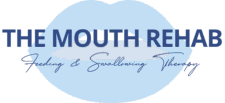
Understanding Orofacial Myofunctional Disorders (OMDs)
Orofacial Myofunctional Disorders (OMDs) are conditions that affect the muscles and functions of the face and mouth. These disorders can interfere with the normal growth, development, and function of the orofacial structures. They can occur at any age, from infancy to adulthood, and often coexist with other speech, breathing, swallowing and other oral disorders. The causes of OMDs are multifactorial, involving learned behaviors, physical and structural variables, genetic predispositions, and environmental factors.
Symptoms and causes of OMDs
OMDs can manifest through various signs and symptoms, including:
- Thumb and finger sucking habits
- Atypical swallowing patterns or tongue thrust
- Oral habits such as lip/cheek biting and nail biting
- Tongue, lip, and nail-biting habits
- Mouth breathing
- Articulation disorders such as difficulty with sounds like /s/, /z/, /sh/, /ch/, and /j/
- Poor oral rest posture (e.g., lips apart, tongue forward, or on the floor of the mouth)
- Dental abnormalities (e.g., open bite, overjet, overbite)
- Chewing and swallowing difficulties
- Snoring and sleep disorders
OMDs can result from various factors, including:
- Structural abnormalities such as ankyloglossia (tongue-tie) or enlarged tonsils/adenoids
- Genetic predispositions like high palate or tongue ties that impact muscle tone and function
- Environmental influences like dust or allergies cause chronic congestion leading to mouth breathing
- Habitual behaviors like nail biting, prolonged pacifier use or thumb sucking
The Role of Orofacial Myofunctional Therapy (OMT)
Orofacial Myofunctional Therapy (OMT) aims to correct the improper function of the facial and oral muscles. The goals of OMT are to establish correct oral rest posture (lips closed, tongue resting on the palate, breathing through the nose), improve swallowing patterns, and correct speech articulation errors.
Benefits of OMT include:
- Improved oral rest posture: Proper positioning of the tongue and lips at rest helps maintain dental alignment and supports nasal breathing.
- Corrected swallowing patterns: Addressing tongue thrust and other atypical swallowing patterns prevents dental malocclusions and supports efficient swallowing.
- Enhanced speech clarity: Strengthening and coordinating oral muscles improves articulation and overall speech intelligibility.
- Reduction of harmful oral habits: Eliminating non-nutritive sucking and other habits reduces the risk of dental and speech issues.
OMT Across Different Age Groups
Infants
OMDs can be present early in life, even during infancy. Common signs in infants include difficulty with breastfeeding due to poor latch, excessive drooling, and signs of restricted tongue movement, which may indicate ankyloglossia (tongue-tie). Infants may struggle with effective sucking and swallowing, which can impact their nutrition and overall growth.
Interventions: For infants, early intervention is crucial. Speech-language pathologists (SLPs) and lactation consultants can work together to assess and address feeding difficulties. If tongue-tied is suspected, a referral to a specialist for potential frenectomy may be necessary. Orofacial myofunctional therapy (OMT) can help improve muscle function and coordination, supporting better feeding and swallowing patterns.
Toddlers
As children grow into toddlers, signs of OMDs may become more apparent. Symptoms in this age group can include persistent nonnutritive sucking habits (thumb, finger, or pacifier sucking), mouth breathing, open mouth resting posture, and difficulty transitioning to solid foods. These issues can affect dental development and speech articulation.
Interventions: In toddlers, OMT focuses on eliminating nonnutritive sucking habits and promoting nasal breathing. SLPs can work with children to develop proper oral rest postures and improve their feeding and swallowing techniques. Early intervention can prevent the development of more serious dental and speech problems as the child grows.
School-Age Children
In school-age children, OMDs often manifest as tongue thrusting (protrusion of the tongue between the teeth), articulation disorders, and chronic mouth breathing. These children may also exhibit dental abnormalities, such as open bite or excessive overjet. Speech sound distortions, particularly with sounds like /s/, /z/, and challenges in achieving proper lip closure are common.
Interventions: For school-age children, a comprehensive assessment by an SLP is essential. Therapy may involve exercises to improve tongue and lip strength and coordination, as well as techniques to correct tongue thrust and enhance nasal breathing. Collaboration with orthodontists and other dental professionals is often necessary to address any dental issues and ensure a holistic approach to treatment.
Adults
OMDs in adults can present as temporomandibular disorders (TMD), chronic mouth breathing, and speech articulation issues. Adults may also experience dental problems related to improper tongue posture and resting habits developed during childhood. Signs like an open mouth resting posture, difficulty achieving lip closure, and speech distortions can persist into adulthood if not addressed.
Interventions: For adults, OMT aims to retrain oral and facial muscles to achieve optimal function and posture. Therapy may include exercises to improve muscle strength and coordination, techniques to promote nasal breathing, and strategies to correct speech distortions. Working with an interdisciplinary team, including dentists, orthodontists, and otolaryngologists, ensures comprehensive care and successful outcomes.
Conclusion
Orofacial myofunctional therapy offers significant benefits across all age groups, from infants to adults. By addressing the underlying muscle dysfunctions and promoting proper orofacial development, OMT can improve feeding, swallowing, speech, and overall oral health. Early intervention and a collaborative approach with healthcare professionals are key to effectively managing OMDs and enhancing the quality of life for individuals affected by these disorders.
Understanding the importance of OMT and recognizing the symptoms and causes of OMDs can help individuals seek appropriate care and treatment. Whether dealing with an infant struggling with feeding, a toddler with persistent oral habits, a school-age child with articulation issues, or an adult facing chronic orofacial problems, OMT provides a structured and effective approach to improving oral function and overall well-being.


